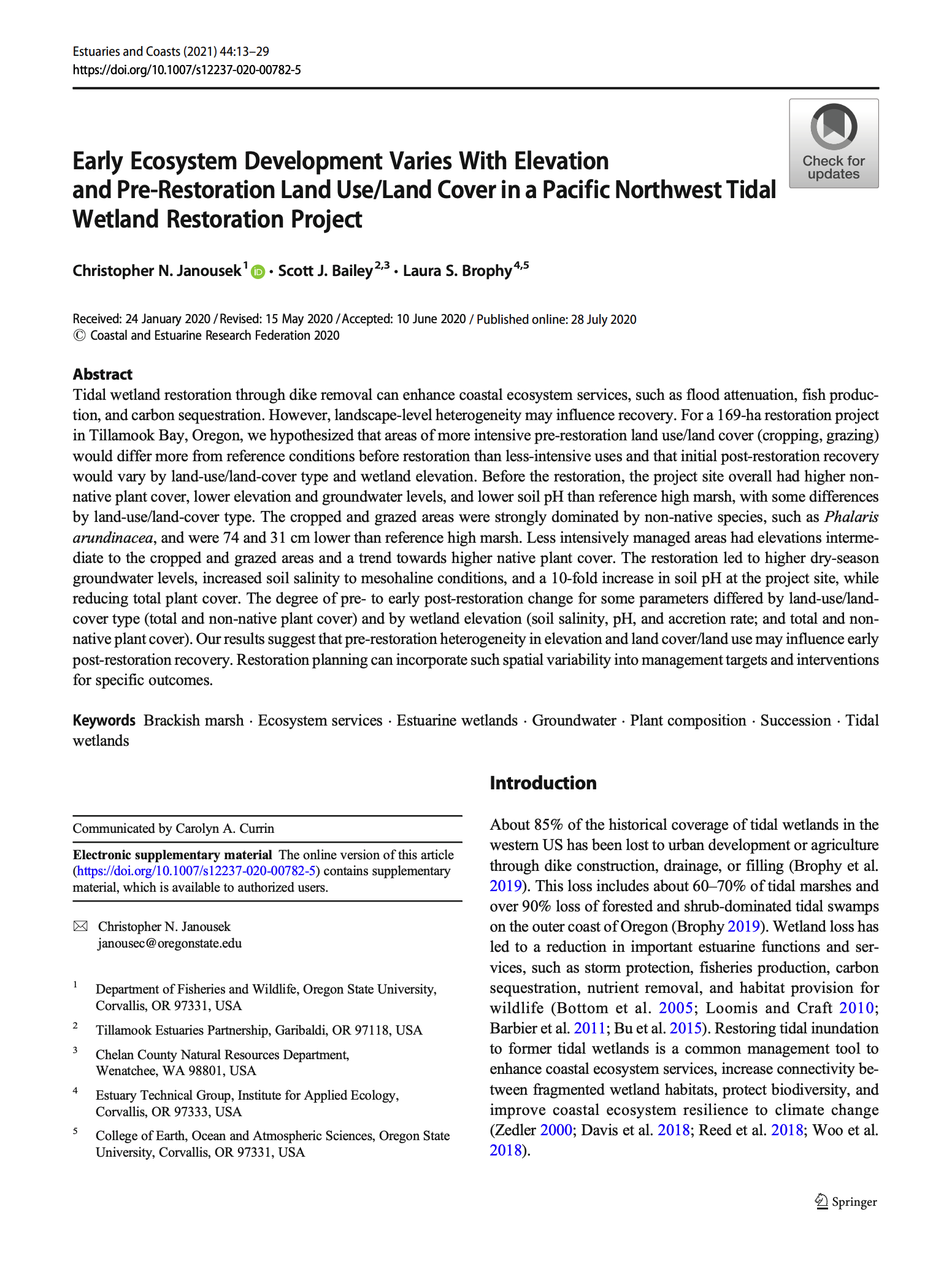
Tidal wetland restoration through dike removal can enhance coastal ecosystem services, such as flood attenuation, fish production, and carbon sequestration. However, landscape-level heterogeneity may influence recovery. For a 169-ha restoration project in Tillamook Bay, Oregon, we hypothesized that areas of more intensive pre-restoration land use/land cover (cropping, grazing) would differ more from reference conditions before restoration than less-intensive uses and that initial post-restoration recovery would vary by land-use/land-cover type and wetland elevation. Before the restoration, the project site overall had higher nonnative plant cover, lower elevation and groundwater levels, and lower soil pH than reference high marsh, with some differences by land-use/land-cover type. The cropped and grazed areas were strongly dominated by non-native species, such as Phalaris arundinacea, and were 74 and 31 cm lower than reference high marsh. Less intensively managed areas had elevations intermediate to the cropped and grazed areas and a trend towards higher native plant cover. The restoration led to higher dry-season groundwater levels, increased soil salinity to mesohaline conditions, and a 10-fold increase in soil pH at the project site, while reducing total plant cover. The degree of pre- to early post-restoration change for some parameters differed by land-use/landcover type (total and non-native plant cover) and by wetland elevation (soil salinity, pH, and accretion rate; and total and nonnative plant cover). Our results suggest that pre-restoration heterogeneity in elevation and land cover/land use may influence early post-restoration recovery. Restoration planning can incorporate such spatial variability into management targets and interventions for specific outcomes.
